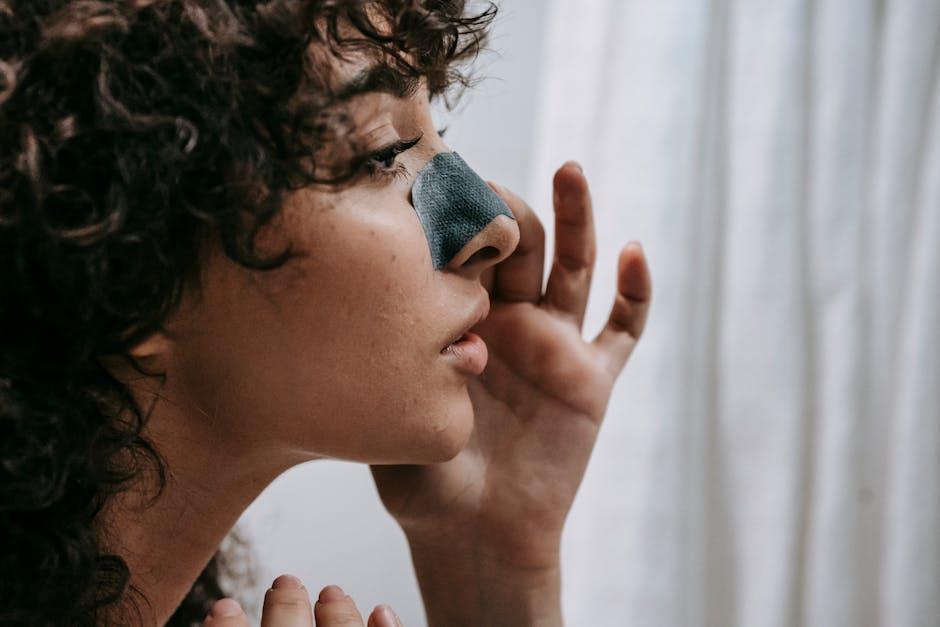How to Get Rid of Blackheads Without Damaging Skin
In the intricate tapestry of our skin, blackheads often emerge as unwelcome guests, tiny yet persistent in their presence. These small blemishes, seemingly insignificant, can be a source of frustration for many. Yet, in our quest for clear, radiant skin, the challenge lies not just in banishing these tiny intruders but in doing so with care and respect for our skin’s delicate balance. This article delves into the art and science of removing blackheads without causing harm, offering insights and techniques that promise both effectiveness and gentleness. Whether you’re a skincare novice or a seasoned enthusiast, join us as we explore pathways to achieving a complexion that’s not only clear but also healthy and resilient. Blackheads and Their Causes”>
Blackheads and Their Causes”>
Understanding Blackheads and Their Causes
Blackheads, those tiny dark spots that often appear on the nose, chin, and forehead, are a common skincare concern. They are a type of acne known as open comedones and form when hair follicles become clogged with dead skin cells, oil, and bacteria. The open surface of these clogged pores reacts with oxygen in the air, turning them black. Factors contributing to their development include excess sebum production, hormonal changes, and improper cleansing habits.
- Excess Oil Production: Overactive sebaceous glands can lead to more oil on the skin’s surface, increasing the likelihood of clogged pores.
- Hormonal Fluctuations: Changes in hormone levels, especially during puberty, menstruation, or pregnancy, can boost oil production.
- Poor Skincare Routine: Failing to properly cleanse the skin or using products that are too harsh can exacerbate blackhead formation.
- Diet and Lifestyle: High-fat diets and stress may contribute to increased oil production and pore congestion.
Understanding these causes is essential in effectively targeting and preventing blackheads without resorting to skin-damaging methods.

Gentle Cleansing Techniques for Clearer Skin
Achieving a clear complexion without causing harm to your skin requires mindful cleansing methods. Begin with a gentle cleanser that suits your skin type. Look for products containing natural ingredients like chamomile or aloe vera, which soothe and hydrate while effectively removing impurities. Avoid harsh scrubs and exfoliants that can strip the skin’s natural oils and cause irritation.
- Steam Therapy: Use steam to open up your pores before cleansing. Simply fill a bowl with hot water, lean over it, and cover your head with a towel for a few minutes. This softens the debris and makes it easier to remove blackheads.
- Clay Masks: Incorporate clay masks into your routine once or twice a week. These masks absorb excess oil and draw out impurities, helping to unclog pores without the need for aggressive scrubbing.
- Non-comedogenic Products: Opt for non-comedogenic skincare and makeup products to prevent further clogging of your pores. This choice will minimize the formation of new blackheads.
For those stubborn blackheads, consider using a salicylic acid treatment. Salicylic acid penetrates the pores and dissolves the sebum, promoting a clearer complexion over time. Remember, patience and consistency are key to maintaining healthy skin.
Exfoliation Methods to Prevent and Remove Blackheads
Achieving a smooth, clear complexion often starts with finding the right exfoliation method that suits your skin type. Here are some effective techniques to consider:
- Chemical Exfoliants: Opt for products containing alpha-hydroxy acids (AHAs) or beta-hydroxy acids (BHAs). These ingredients penetrate the pores, helping to dissolve the oil and dead skin cells that can cause blackheads.
- Enzyme Exfoliants: Ideal for sensitive skin, enzyme exfoliants use natural ingredients like fruit enzymes to gently remove dead skin cells without the abrasive action of scrubs.
- Manual Exfoliation: Use a soft brush or a washcloth to gently buff away dead skin cells. Ensure your tool is clean and that you apply light pressure to avoid irritation.
Incorporate these methods into your routine with caution, ensuring not to over-exfoliate, which can lead to skin irritation. Aim to exfoliate 2-3 times a week, adjusting based on your skin’s response. By integrating these techniques mindfully, you can effectively combat blackheads while maintaining your skin’s natural balance.

Choosing the Right Products for Your Skin Type
Understanding your skin type is crucial in selecting products that effectively target blackheads while maintaining the health of your skin. For oily skin, look for products containing salicylic acid or benzoyl peroxide, which help to exfoliate and unclog pores. Those with dry or sensitive skin should opt for gentler formulas that include soothing ingredients like chamomile or aloe vera to prevent irritation. Combination skin can benefit from a balanced approach, using lightweight, non-comedogenic products that won’t overwhelm either the dry or oily areas.
- Oily Skin: Salicylic acid cleansers, clay masks
- Dry/Sensitive Skin: Gentle cleansers, hydrating serums
- Combination Skin: Lightweight moisturizers, balancing toners
Additionally, consider incorporating natural exfoliants like jojoba beads or fruit enzymes, which can be less abrasive than synthetic scrubs, thus reducing the risk of skin damage. Regularly using these tailored products can help maintain clear skin without the harshness that often accompanies blackhead treatments.
Key Takeaways
In the quest for clearer skin, tackling blackheads can feel like a daunting challenge, but with the right approach, it’s entirely achievable without compromising your skin’s health. As we’ve explored, a blend of gentle techniques and mindful product choices can make all the difference. Remember, your skin’s journey is uniquely yours, and patience is key. Embrace the small victories along the way, and let each step bring you closer to the radiant, clear complexion you desire. it’s not just about banishing blackheads—it’s about nurturing your skin with the care and respect it deserves. Here’s to a clearer tomorrow and a glowing reflection in the mirror.


